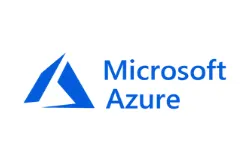Amazon Route 53 - Simple Tutorial
Amazon Route 53 Amazon Route 53 is a web service which is a highly scalable and available Domain Name System (DNS). This is accomplished by translating domain names (www.apponix.com) into IP addresses which is how computers connect.
Functions of Route53 Domain Registration: This allows the user to create public DNS records. Users can also manage the IP address available for user’s domain names in the Internet’s DNS record.
Domain Name System (DNS)service:
Route53 translates domain names like www.apponix.com into IP addresses like 192.0.1.2. It responds to request via a network of DNS servers. Users can use Route53 to create records for a new domain or to transfer DNS records for an existing domain.
Health Checking: Route53 monitor the health of user’s application, web servers and other resources. Route53 periodically sends requests to the endpoint to verify that it is functional, available and reachable.
Benefits of Amazon53 Route53 provides several benefits. They are:
Simple Flexible Reliable and Highly Available Fast Cost-effective Scalable Secure Designed to Integrate with Other AWS Services
Simple: User’s DNS requests are answered by Route53 in AWS within minutes and it’s a self-service sign-up Users can simple AWS Route 53 API and embed it in web applications too.
Flexible: Amazon Route53 provides users flexibility in choosing traffic policies based on different criteria such as latency, geographic location, and endpoint health.
Reliable and Highly Available: Aws Route53 is designed and built using AWS's reliable and highly available infrastructure. DNS servers are distributed across many availability zones which helps in routing to websites consistently by end-users.
Fast: Distributed servers around the world make a low-latency service because of Rooute53, route users to the nearest DNS servers available.
Cost-effective: AWS follows the Pay-as-you-go model so users can pay for what you use. For example, the hosted zones are managing the number of queries and user’s domains, etc., Optional features like health checks and traffic policies are available at very low cost
Scalable: When the query volume size varies, Amazon Route53 is designed to automatically scale up or down.
Secure: Users can create and grant permission and unique credentials to every user with the AWS account. Designed to Integrate with Other AWS Services Amazon Route53 works well with other services like Amazon s3 and Amazon EC2
For Example, Route53 can be used to domain names or IP addresses to Amazon S3 buckets and Amazon EC2 instances.
AWS Routing policies Below are the routing policies which are used by AWS Route53 are: Simple Routing Latency-based Routing Geolocation Routing
Simple Routing: This type of routing responds to DNS requests based only on the values in AWS Route Table. When users have a single resource that performs a given function of a user-defined domain using a simple routing policy.
Latency-based Routing: If an application is hosted in multiple regions on EC2 instances, user latency can be reduced by serving requests from the region where network latency is the lowest.
Geolocation Routing: Geolocation routing can be used to send traffic to resources based on the geographical location of users.
Most Popular Courses
AWS Certification Training || SEO Coursea || Azure Certification || Google Cloud certification






.webp)
